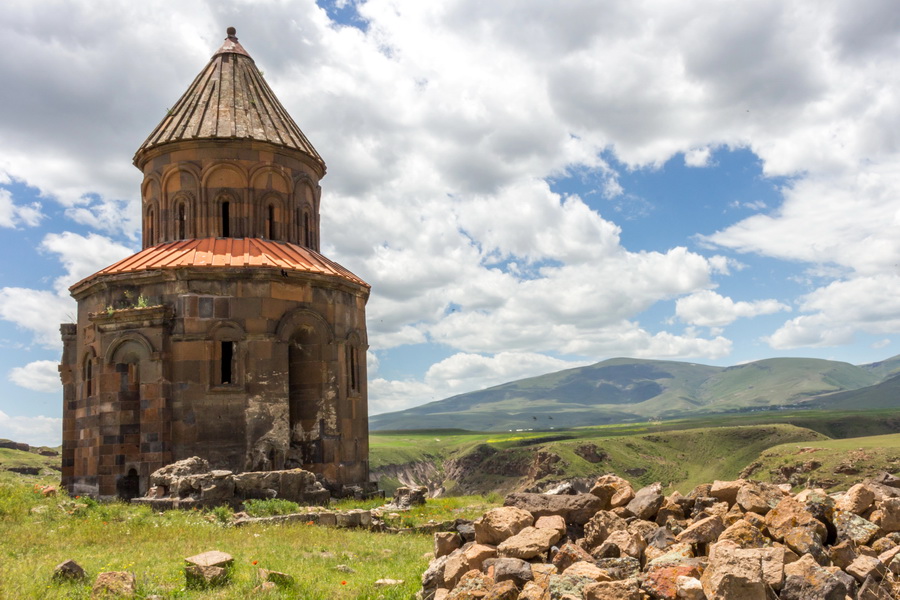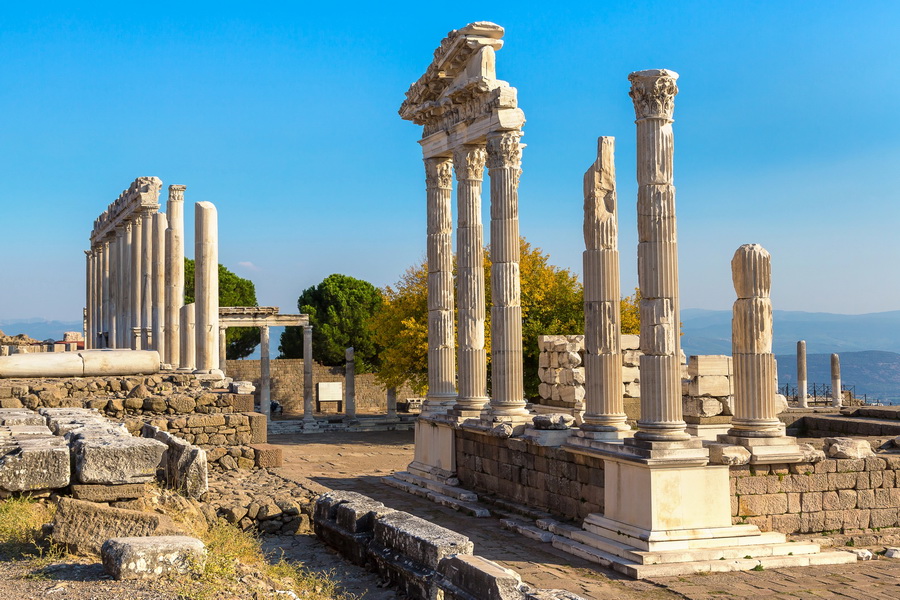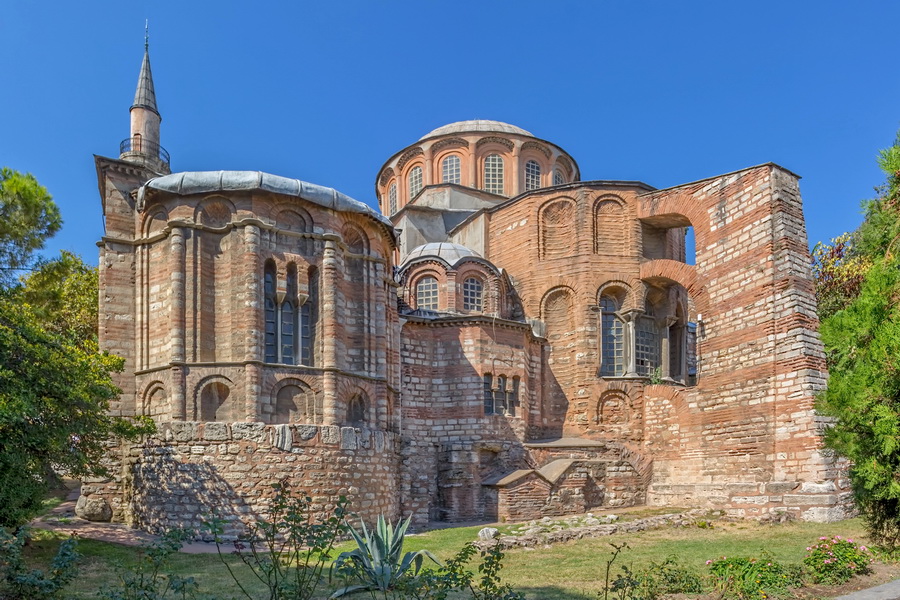UNESCO Sites Included in the Turkey Museum Pass

Last update: 24 March 2025
Turkey (Türkiye), a land connecting continents, is home to 21 UNESCO World Heritage Sites, of which 19 are cultural sites, featuring 2 cultural and natural sites. Many of these remarkable places can be visited with the MuseumPass Türkiye, granting access to numerous archaeological historical sites and museums across the country, offering an opportunity to explore ancient cultures. If regional museum passes also cover these locations, they will be mentioned accordingly. Here are some of the top spots to explore.
- Immortalised by Homer, the archaeological site of Troy (Troya) in Çanakkale, the scars of war and mythology come alive. This UNESCO World Heritage site is surely accessible with the MuseumPass Türkiye. Its legendary wooden horse trick remains fascinating to this day.
- Once a Hittite capital, Hattuşa is guarded by the Lion Gate, where stone-carved lions once warded off evil spirits. It’s a captivating monument of old Anatolia's architectural expertise.
- Mount Nemrut (Nemrut Dağı), Adıyaman – Perched in the Commagene Kingdom, colossal statues of gods and kings commemorate Antiochus I, integrating Persian and Macedonian influences. It’s a Hellenistic-period marvel like no other.
- Labelled as "Zero Point in Time," Göbeklitepe in Şanlıurfa is a 12,000-year-old spot that reshaped our understanding of civilisation with its megalithic structures, uncovering an unexpected Neolithic sophistication.
- A Neolithic marvel, Çatalhöyük (Konya) showcases an early community's domestic life, adorned with female deity figurines. It’s a pure window into early urban settlement.
- Turkey's 6000-year-old Arslantepe Mound, also known as Melid (Arslantepe Höyüğü) in Malatya, joined UNESCO's World Heritage List in 2021, recognised for its role in early state formation, architecture, and the discovery of the world's oldest swords.
- Pergamon, a UNESCO-listed site in Turkey, showcases a multi-layered cultural landscape with Hellenistic, Roman, Byzantine, and Ottoman influences, featuring an acropolis, a healing centre, burial mounds, and architectural innovations.
- Associated with King Midas, the ancient capital of Phrygia, Gordion, is a UNESCO-listed archaeological site in Turkey with a citadel, town ruins, fortifications, and burial mounds.
- On the Turkish-Armenian border in Kars, the ruins of Ani, known as the "City of 1001 Churches," present mediaeval ruins with early Gothic architecture. Among its treasures are the Menucihr Mosque (Menûçihr Camii) and cave churches.
- A Roman port town, Ephesus (Efes) mesmerises guests with its grand amphitheatre and near-mythical beauty.
- Situated on the therapeutic hot springs of Pamukkale, Hierapolis in Denizli promotes ancient baths, Pluto’s Gate, and a still-active antique pool.
- Set between Antalya and Muğla, Xanthos-Letoon is another UNESCO World Heritage site showcasing the legacy of the Lycian Civilisation. Once a social and commercial midpoint, it demonstrates their traditions through its inscriptions and iconic tomb architecture, including the Xanthian Obelisk (Ksantos Steli).

UNESCO Historic Areas of Istanbul
Istanbul’s historic heart, a UNESCO-listed treasure, showcases the city’s imperial past, where Byzantine and Ottoman magnificence are put together. With the MuseumPass Türkiye and Istanbul Museum Kart, visitors can access architectural and cultural sensations such as the Hagia Sophia (Ayasofya), Topkapı Palace (Topkapı Sarayı), and the Church of St. Irene (Hagia Irene).
MuseumPass Türkiye:
- Commissioned by Emperor Justinian I and completed in 537 AD, Hagia Sophia is one of the central landmarks of Turkish culture and identity, which evolved from a Byzantine cathedral to an Ottoman mosque, a museum, and back to a mosque.
- Another milestone of Turkish architecture, Topkapı Palace was commissioned by Sultan Mehmed II in the 15th century and served as the political and cultural heart of the Ottoman Empire before becoming a museum, displaying imperial and sacred relics, charming gardens, and the grand kitchens that structured Ottoman cuisine.
- The second largest church after Hagia Sophia, Hagia Irene (Church of St. Irene) is the oldest Eastern Roman church in Istanbul, built in the 4th century AD, having survived fires, earthquakes, and iconoclastic changes before becoming the Ottoman Empire’s first museum and later serving as a military depot and exhibition space.
- The Basilica Cistern (Yerebatan Sarnıcı) is an underground marvel from the 6th century, embracing Eastern Roman engineering. Supported by over 300 marble columns, this subterranean reservoir once supplied water to imperial palaces. Today, it remains the only restored underground structure of its kind.

Istanbul Museum Kart:
- While Chora Church (Kariye Camii) isn’t available on MuseumPass Türkiye, Istanbul Museum Kart provides access to this masterpiece of Eastern Roman craftsmanship. Once the Church of the Holy Saviour in Chora, it was originally a monastic complex beyond the city walls. Converted into a mosque after 1453 and later rediscovered during its transformation into a museum in 1945, in 2024, after extensive restoration, Kariye reopened as a mosque, remaining an iconic symbol of Istanbul’s cultural and spiritual evolution.

